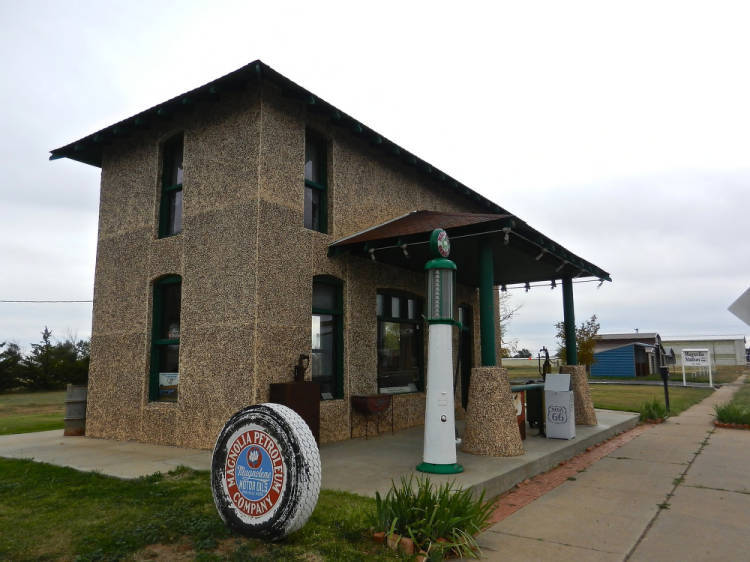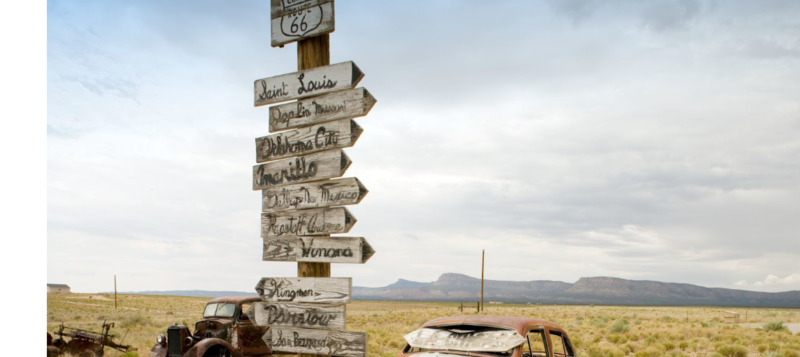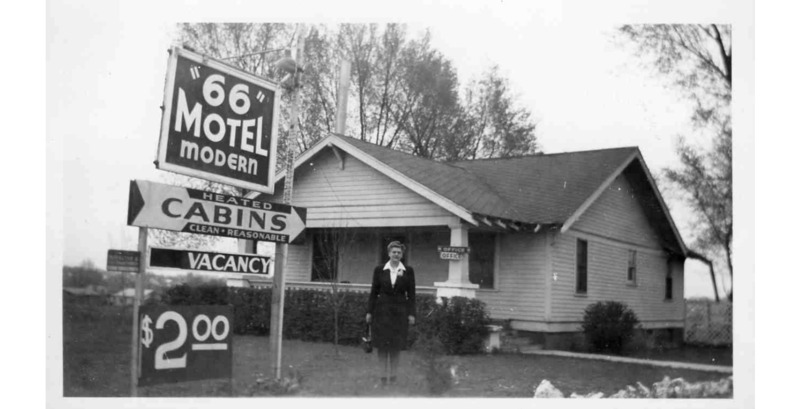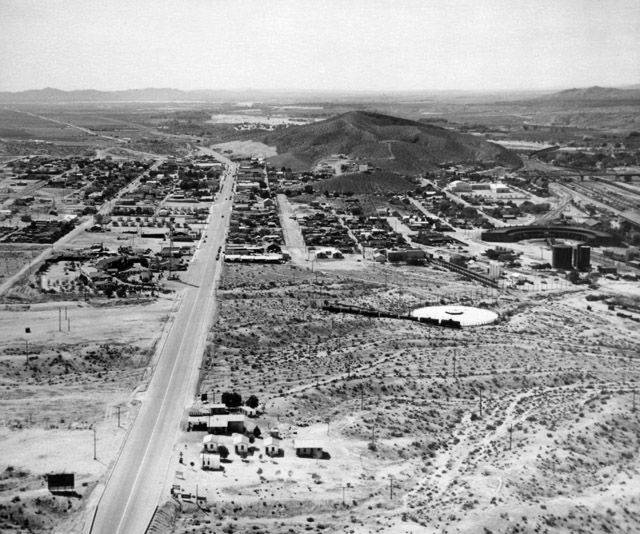Postwar Changes
After the end of WW II, America was changing quickly and significantly; and Route 66 would again play a major role in the shifting American landscape.
Above is a restored gas station off of Route 66, including a sign and collectible gas pump like the ones that would have been used by westward travelers looking to head toward a new life or the promise of adventure on the Mother Road.
Returning soldiers, having received training in Western states along Route 66, began migrating away from the cold weather and close quarters of East Coast and Midwestern cities to Texas, New Mexico, Arizona, and California. This shift continued well into the 50’s and 60’s and had a major impact on the development of suburban areas in the destination states.
A hand painted sign post near Route 66 shows the many places that Route 66 could take travelers.
This renewed and increased use of Route 66 during the 1950s and 1960s laid the foundation for what the road became known for in later years; small roadside stands, unique and quaint travel accommodations, all night diners with hot coffee and good food for road warriors at any hour, and scenic views of large swathes of the breathtaking American West.
The openness, remoteness, and changing landscapes travelers experienced while driving Route 66 made it synonymous with the feelings of freedom and independence; while allowing the road to become solidly anchored in nostalgia and wistful remembrances of times past.
Above is an aerial image of Barstow, CA showing the beginning of an industrial and economic boom for the area thanks to access via Route 66.



